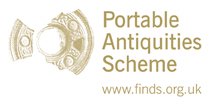Server check!
You are on the training database
Knife
The earliest knives appeared alongside the Bell Beaker peoples during the Chalcolithic (Copper Age/Early Bronze Age, dated to c.2,500-2,400 BC). These early forms were created with tangs, for easy hafting and have appeared in later Beaker graves in Britain, such as Ring-ditch 15, Barrow 3 at Radley, Oxfordshire. Knives were adapted from copper to bronze during the Middle Bronze Age, gaining prominence in the Tumulus culture, before evolving into several different types during the later Bronze Age, with the 'hogs-back' blade form found in Carp's Tongue hoards, emerging during the Ewart Park metalwork phase in Britain (c.1,020-800 BC). 8 distinct types of knife are found in Britain; tanged leather working, triangular perforated, 'hog backed', double-edged tanged, double-edged socketed, single-edged tanged, single edged-socketed and single-edged solid-hilted.
Examples
Tanged Leather-Working SUSS-CA3F71
Date-range: circa 1100 - 800 BC (Ewart Park metalwork phase)
Distribution: South East and South Central Britain
Description: Initially known as 'tanged chisels', these knives were reassessed and deemed to be more practical in the art of the currier (leather-worker), owing to the fact that, whilst the trapezoidal blades may have been practical for light woodworking, they would have buckled under the more demanding roles required of a chisel (e.g. mortising - cutting square holes in lumber) (Burgess, Coombs and Davis: 1972, 217-218).

Triangular Perforated SOMDOR-FFE225
Date-range: circa1020 - 800 BC (Ewart Park metalwork phase)
Distribution: South East England
Description: Carp's Tongue Complex knives, very similar to the more commonly known 'hog's back' variety of knife, these triangular shaped knives are strangely absent from finds in the Low Countries on the Continent, and are very rare in the rest of Central or Northern Europe.

Hogs-Back 1893,0426.138
Date-range: circa 1020 - 800 BC (Ewart Park metalwork phase)
Distribution: South Eastern England
Description: O'Connor (1980: 179) includes the 'hogs-back' knives found in Britain amongst the Carp's Tongue hoards, and notes their similarity to the sub-rectangular or rectangular perforated knives found on the continent, particularly in Breton hoards. These knives are found across Southern-Eastern England, with a strong presence in Kent, particularly around Dover.
Double-Edged Tanged WG.1720
Date-range: circa 1020 - 800 BC (Ewart Park metalwork phase)
Distribution: South East, South Central, North East England
Description: Variety of forms related to this type, from riveted, ribbed and narrow tanged examples, to rarer flanged tanged artefacts (one found in the Grays Thurrock hoard).
Double-Edged Socketed WG.1314
Date-range: circa 1020 - 800 BC (Ewart Park metalwork phase)
Distribution: Most common in South Eastern England
Description: These knives are a characteristic type of the Ewart Park metalwork phase of the Late Bronze Age, and the majority of said knives belong to the Thorndon type rather than the Dungiven type. Thorndon blades are usually leaf-shaped, and are sub-divided by differences in the shape and appearance of the socket and position of the rivet holes, whilst the Dungiven type also features a leaf-shaped blade, its socket is of oval or 6-8 sided cross-section, and its lower end externally, where meeting the blade, has on either face a U or V-shaped recess.
Single-Edged Tanged HAMP-3EC3C6
Date-range: circa 1020 - 800 BC (Penard metalwork phase)
Distribution: Very rare finds in Britain, with the most well documented example coming from the Grays Thurrock hoard (Essex)
Description: On most of these knives the blade is convex towards the tang, but the group can be divided into earlier and later examples; the latter known through their straight blades, whilst the former featured curved blades. The Grays Thurrock hoard allowed archaeologists to confirm a Ewart Park phase date for British finds.

Single-Edged Socketed
Date-range: circa 1020-800 BC (Ewart Park metalwork phase)
Distribution: Rare finds in Britain, found along the Thames in London and in Somerset.
Description: These knives come in several forms on the Continent; with ribbed or plain sockets, and straight or curved blades, though they are uniformly undecorated.
Single-Edged Solid-Hilted
Date-range: circa 1020-800 BC (Ewart Park metalwork phase)
Distribution: Exceptionally rare finds, only found in the North of France
Description: These rare knives are listed amongst those more commonly found in Britain, owing to their close proximity to the Channel, thus opening the possibility for similar finds along the South coast.
References
- O'Connor, B. 1980 `Cross-Channel relations in the later Bronze Age: relations between Britain, NE France and the Low Countries during the Later Bronze Age and the Early Iron Age, with particular reference to the metalwork'BAR International Series British Archaeological Reports Oxford S91(i-ii).
- Rowlands, M.J. 1976 'The Production and Distribution of Metalwork in the Middle Bronze Age in Southern Britain: Part ii'. Oxford: British Archaeological Reports.


